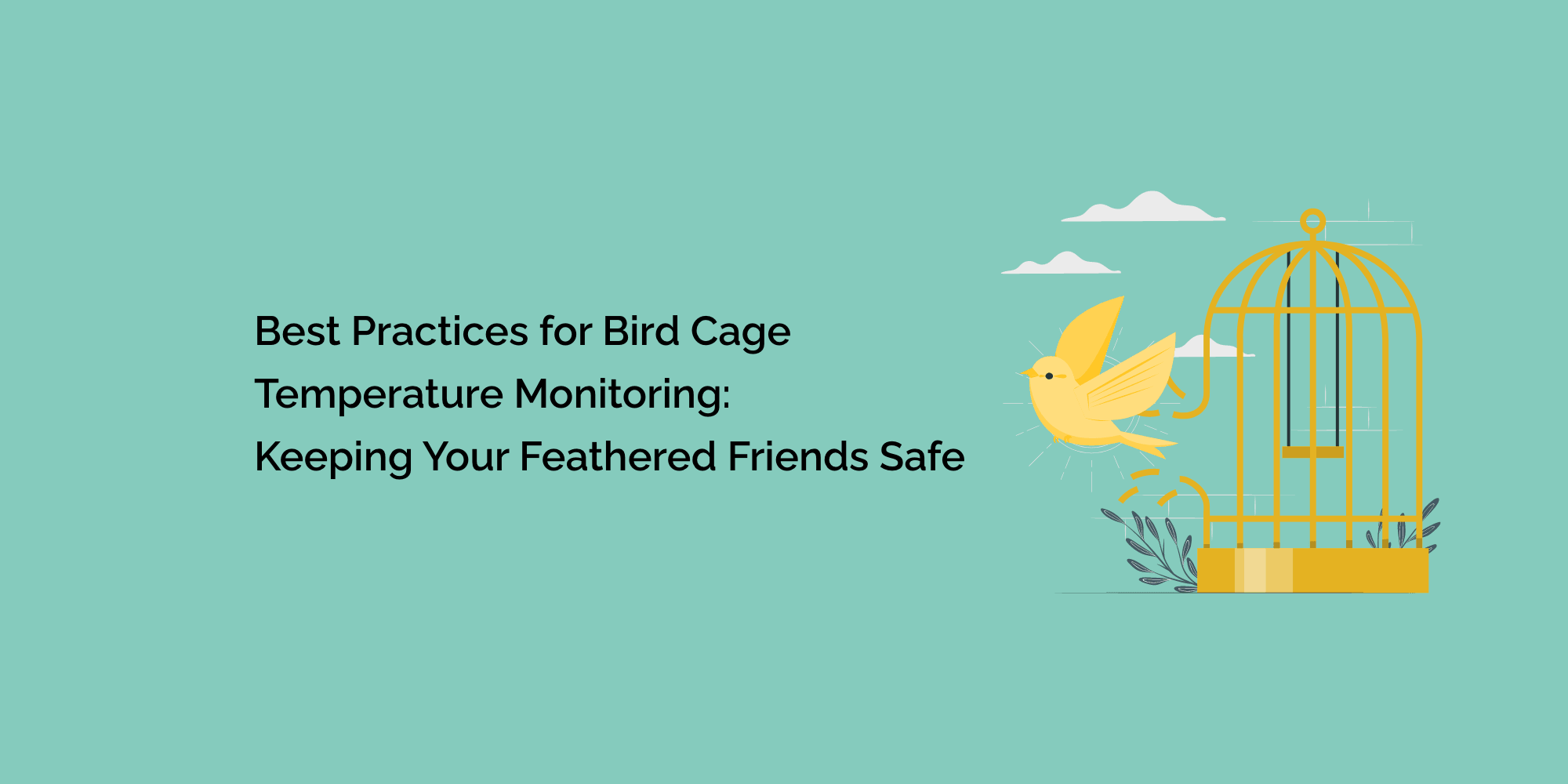Providing a safe and comfortable environment for our feathered companions is paramount to every bird owner. Birds are compassionate creatures, and maintaining the right temperature in their living space is essential for their well-being. In this comprehensive blog, we will explore the best bird cage temperature monitoring practices to ensure your feathered friends stay healthy, happy, and stress-free.
Understanding the Importance of Temperature Monitoring:
Birds, being endothermic creatures, rely on their environment to regulate their body temperature. They adapt to various temperature ranges in the wild according to their natural habitats. In captivity, we are responsible for mimicking these conditions to ensure their health and overall well-being.
- Impact of Incorrect Temperatures: Incorrect temperatures in bird cages can lead to various issues, such as heat stress, dehydration, respiratory problems, and weakened immunity. Conversely, cold temperatures can cause cold stress, respiratory issues, and a compromised immune system. Regular temperature monitoring allows us to identify potential problems early and take corrective actions to safeguard our birds' health.
- Species-Specific Requirements: Different bird species have specific temperature preferences based on their natural habitat. Understanding the preferred temperature range for your bird species is vital for providing the ideal living conditions.
Utilizing Reliable Temperature Monitoring Tools:
To maintain optimal temperatures in the bird cage, it is crucial to use reliable and accurate temperature monitoring tools. Here are some essential tools to consider:
- Digital Thermometers: Digital thermometers with remote probes are practical and affordable for monitoring the temperature inside the bird cage. Place the search at the level where your bird typically perches to obtain the most accurate reading.
- Intelligent Monitoring Systems: Modern innovative monitoring systems offer real-time temperature tracking with the convenience of remote access through smartphones or computers. These systems often come with additional features, such as humidity monitoring and alerts for temperature fluctuations.
- Hygrometers: Hygrometers can measure and display humidity levels inside the cage for bird species with specific humidity requirements. This is especially important for tropical birds or those living in arid environments.
- Infrared Thermometers: Infrared thermometers allow you to measure surface temperatures quickly and accurately, which can help assess the temperature of cage surfaces, perches, and toys.
Ideal Temperature Ranges for Common Bird Species:
Understanding the preferred temperature ranges for common bird species ensures that you provide the most comfortable living conditions for your feathered friend:
- Tropical Birds: Tropical birds, such as parrots, cockatiels, and macaws, prefer warmer temperatures ranging from 70°F to 85°F (21°C to 29°C). These birds thrive in higher humidity levels as well.
- Temperate Birds: Temperate birds, including canaries, finches, and budgerigars, prefer slightly cooler temperatures ranging from 65°F to 75°F (18°C to 24°C). They also require lower humidity levels compared to tropical birds.
- Cold-Climate Birds: Cold-weather birds, like some species of finches and doves, can tolerate cooler temperatures ranging from 60°F to 70°F (15°C to 21°C). However, it is essential to avoid sudden temperature drops and drafts.
Best Practices for Bird Cage Temperature Control:
Maintaining optimal temperatures in the bird cage requires careful attention and adherence to best practices:
- Proper Cage Placement: Place the bird cage in a well-ventilated area away from direct sunlight, heating vents, and drafty rooms. Avoid placing the cell near windows, exposing birds to temperature fluctuations.
- Seasonal Adjustments: Make seasonal adjustments to the cage environment to accommodate changes in temperature and humidity. Use cage covers during colder nights and consider providing additional cooling options in hot weather.
- Provide Adequate Shade: For outdoor aviaries or cages, ensure adequate shade is available to protect birds from direct sunlight and heat during warmer months.
- Maintain Proper Ventilation: Good air circulation is essential for bird cages. Avoid enclosing the cell in a way that restricts airflow and results in stale air.
- Monitor Room Temperature: Keep track of the room temperature where the bird cage is located. Adjust heating or cooling systems as needed to maintain a stable environment.
- Offer Cooling Options: Provide cooling options like a shallow water dish for your bird to bathe and cool off in warmer weather. Misting the cage with water can also help lower the temperature.
- Monitor Humidity Levels: Monitoring and maintaining appropriate humidity levels within the enclosure is essential for tropical bird species.
Conduct Regular Temperature Checks:
Consistent temperature monitoring is critical to ensuring your feathered friend's safety. Make it a habit to check the temperature in the bird cage at least twice a day, especially during extreme weather conditions. This regular check allows you to identify significant temperature fluctuations requiring immediate action.
Understanding Signs of Temperature Discomfort:
Observing your bird's behavior and body language can provide valuable insights into their comfort level with the cage temperature. Signs of temperature discomfort include:
- Feather Puffing or Flattening: Birds may puff up their feathers to trap warmth in cold temperatures or flatten their feathers to dissipate excess heat in warmer conditions.
- Excessive Panting: Panting or open-mouthed breathing can indicate heat stress in birds.
- Lethargy or Unusual Agitation: Extreme temperatures can cause birds to become lethargic or display increased restlessness and agitation.
- Changes in Eating and Drinking Habits: Extreme temperatures can affect your bird's appetite and water intake.
- Breathing Abnormalities: Monitor your bird's breathing patterns for signs of rapid or difficult breathing.
Seek Professional Advice:
If you notice persistent signs of temperature-related stress or discomfort in your bird despite maintaining the recommended temperature range, consult an avian veterinarian. They can help rule out any underlying health issues contributing to your bird's discomfort.
Conclusion:
Birdcage temperature monitoring is an essential aspect of responsible bird ownership. By understanding the impact of heat and cold on birds and implementing best practices for temperature control, we can ensure our feathered friends stay healthy, safe, and happy in their living environment. Regular temperature checks, reliable monitoring tools, and attention to our bird's behavior are crucial to maintaining optimal temperature conditions and providing the best care for our avian companions.








